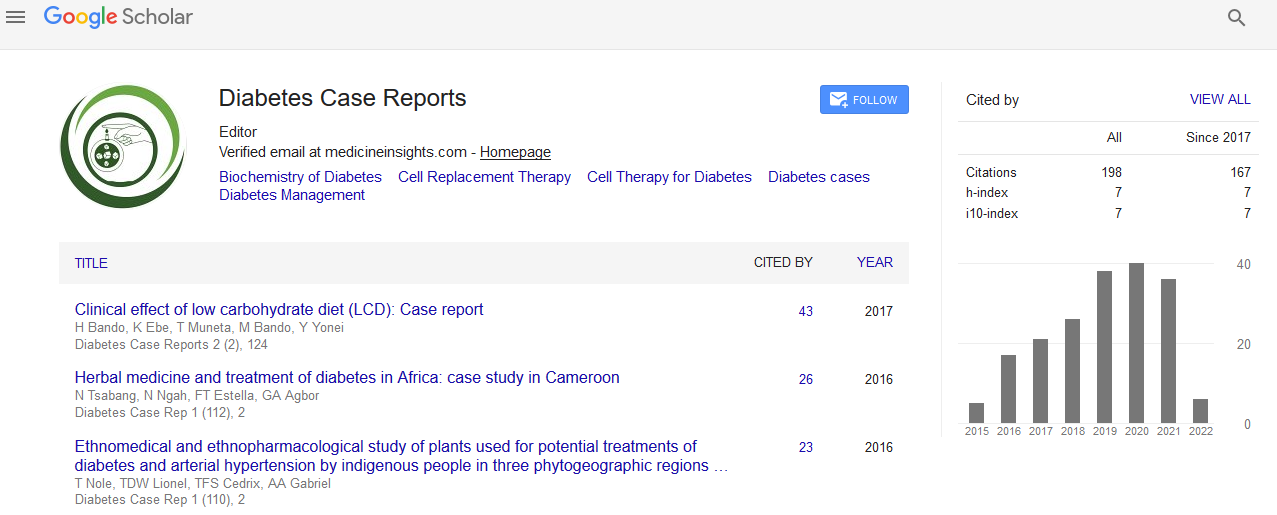Indexed In
- RefSeek
- Hamdard University
- EBSCO A-Z
- Euro Pub
- Google Scholar
Useful Links
Share This Page
Journal Flyer

Open Access Journals
- Agri and Aquaculture
- Biochemistry
- Bioinformatics & Systems Biology
- Business & Management
- Chemistry
- Clinical Sciences
- Engineering
- Food & Nutrition
- General Science
- Genetics & Molecular Biology
- Immunology & Microbiology
- Medical Sciences
- Neuroscience & Psychology
- Nursing & Health Care
- Pharmaceutical Sciences
Abstract
The Association between Root Caries, Xerostomia and Blood Glucose in a Patient with Type 2 Diabetes
Shona Sawhney, Khair Ul Bariya Ali, Ashleigh Mungur and Aylin Baysan*
Dental caries is the most prevalent infectious disease worldwide. A chronic and progressive disease can occur in primary or permanent dentition and can take place in any tooth surface of the crown or root. This slow destruction is related to the dynamic interaction process between the tooth structure, microbial biofilm and dietary carbohydrates, together with the influence of saliva and genetic factors. Reported oral complications associated with diabetes include xerostomia (dry mouth), dental caries, tooth loss, periodontal disease, denture intolerance and soft tissue lesions of the tongue and oral mucosa. The reduction in saliva flow rate and subsequent diminished buffering capacity with calcium and phosphate contents result in an increase in mouth acidity, which contributes to the loss of minerals from the tooth surface and subsequently development of dental caries. These complications would result in compromised quality of life and this is a burden to the healthcare system. Therefore, it is crucial that dental caries in Diabetes patients is identified early and managed effectively. In this case report, multiple root carious lesions in a patient with type 2 diabetes have been discussed by highlighting the potential contributing factors such as salivary components and polypharmacy. A high blood glucose finding highlighted that the patient presented lack of understanding related to the importance of managing Type 2 diabetes.
Published Date: 2021-07-14; Received Date: 2021-06-23

